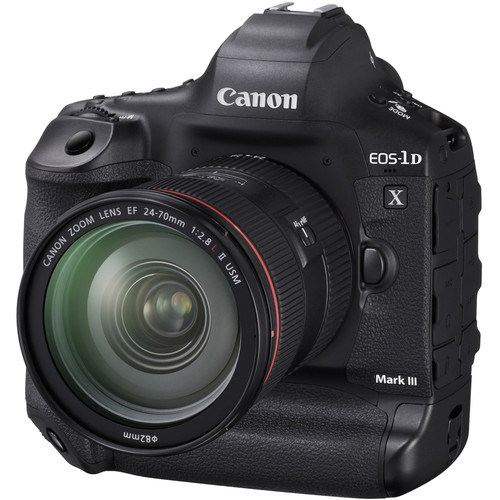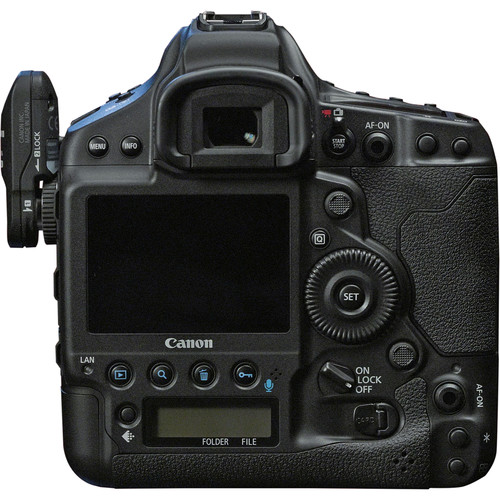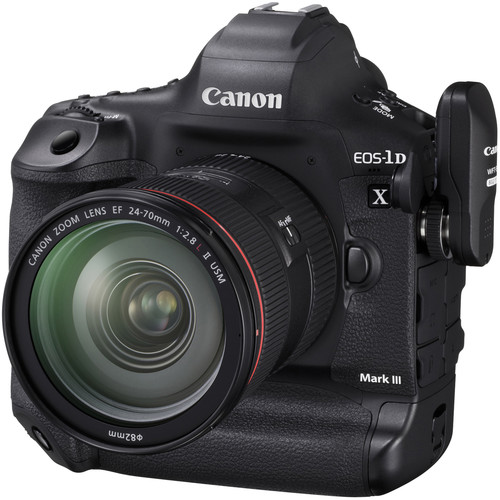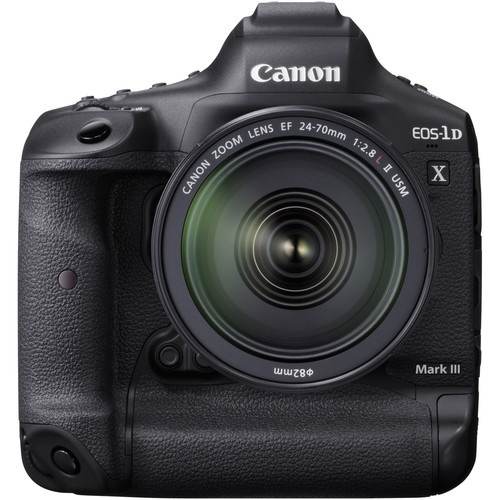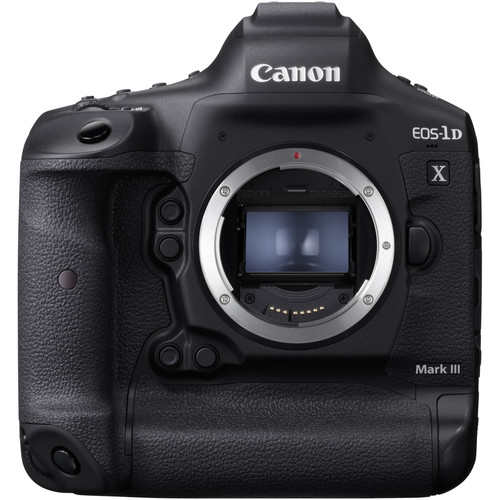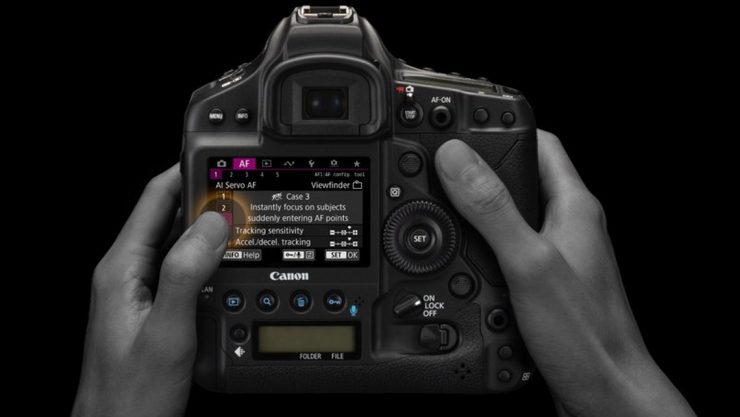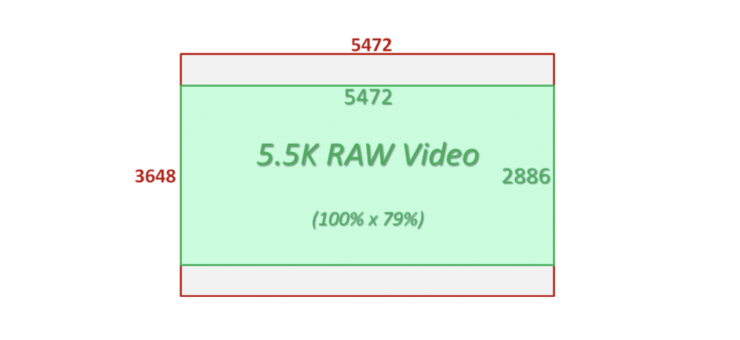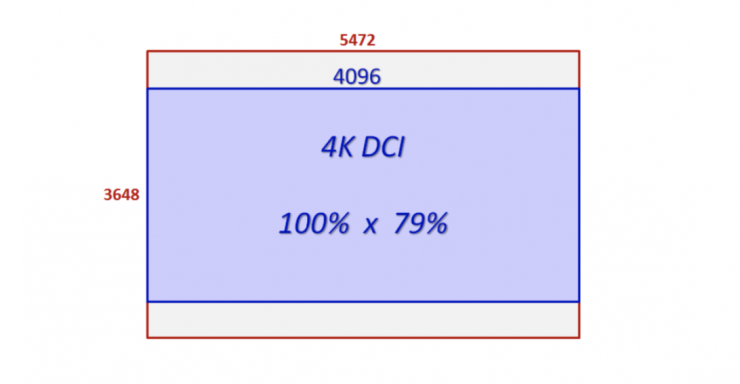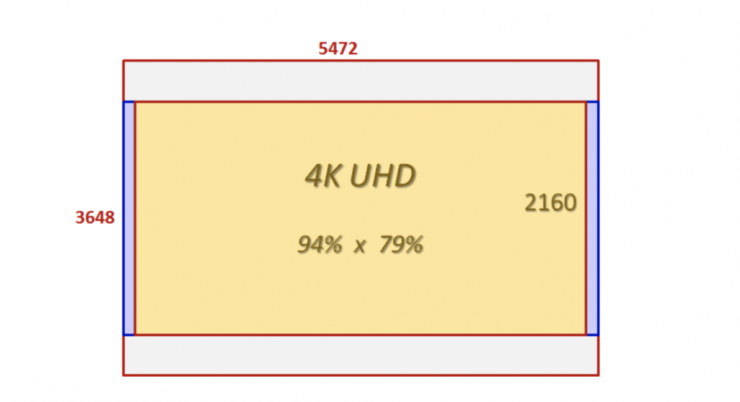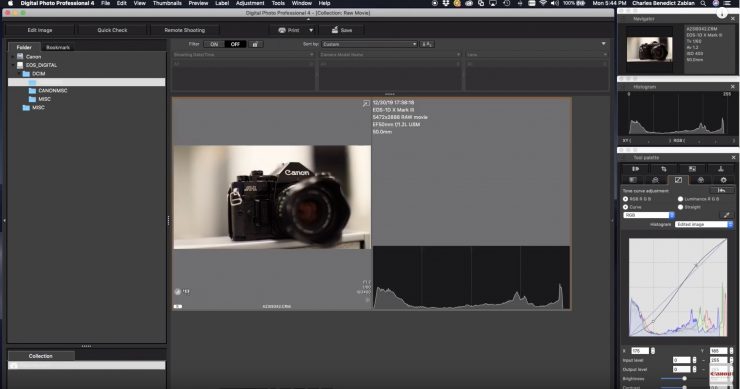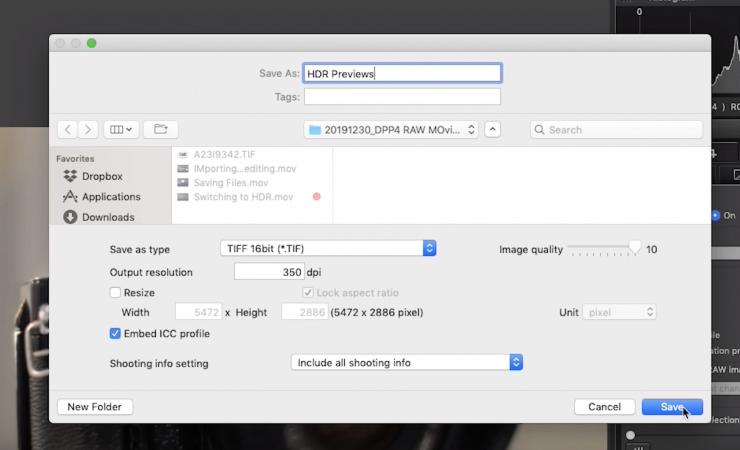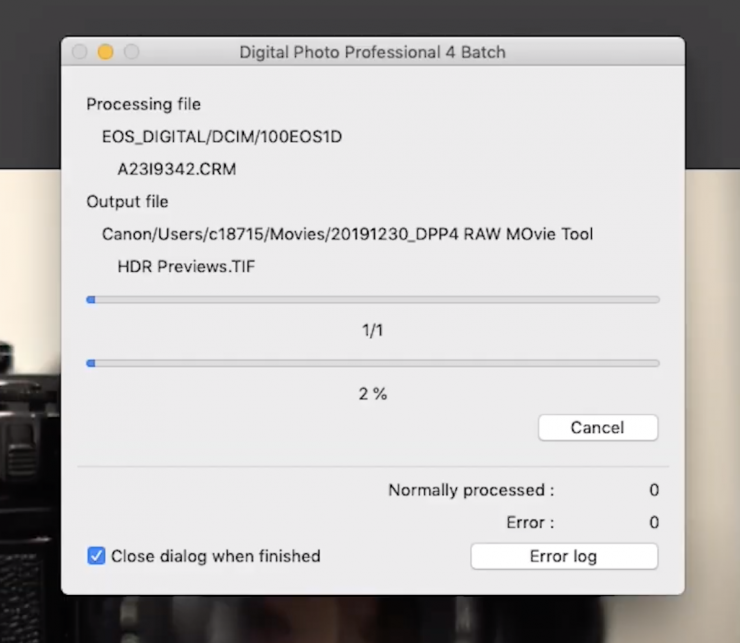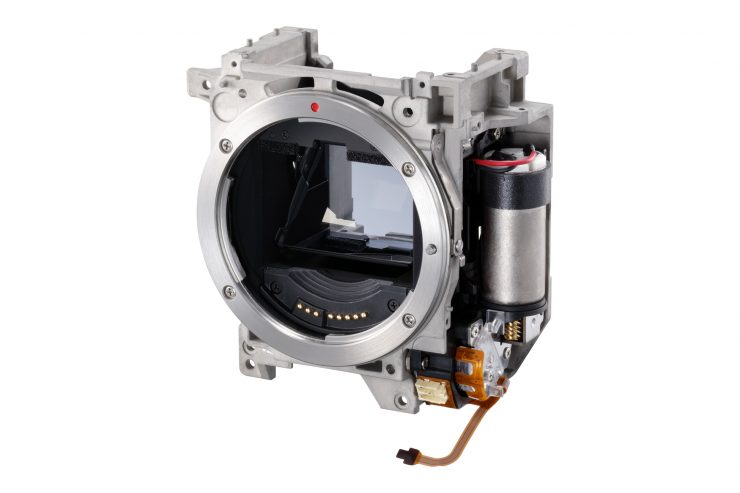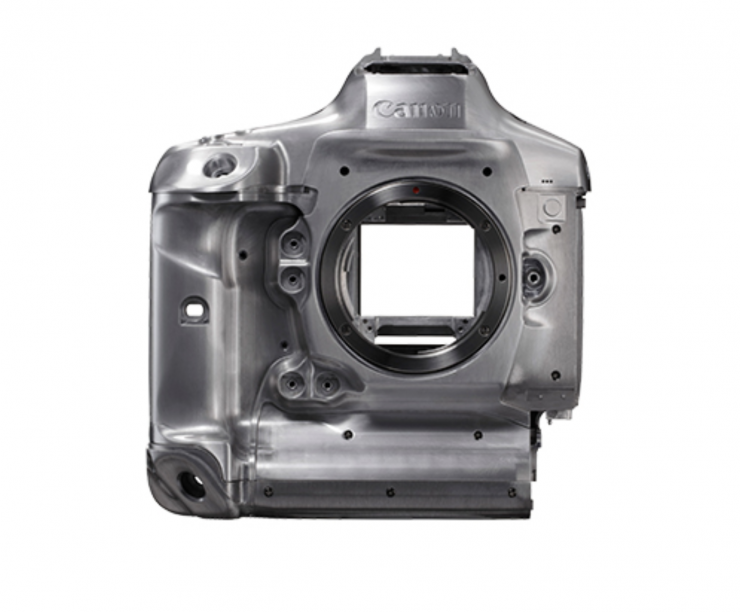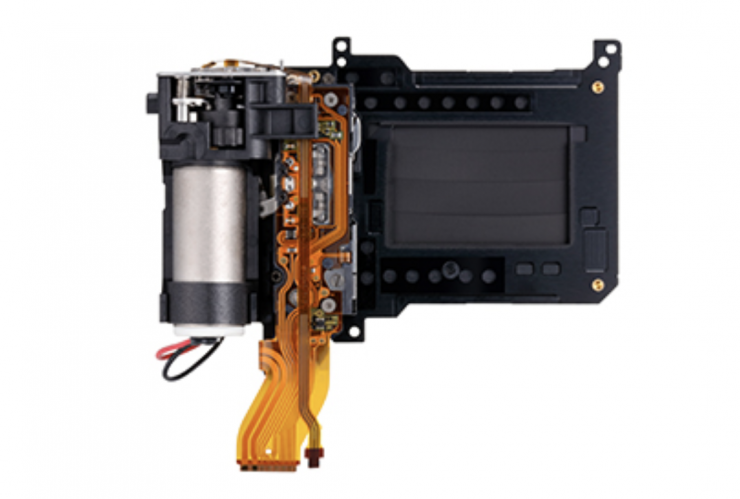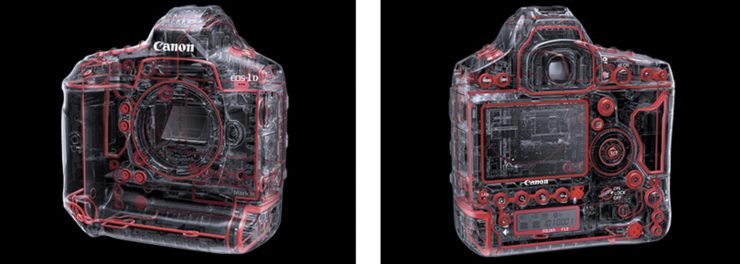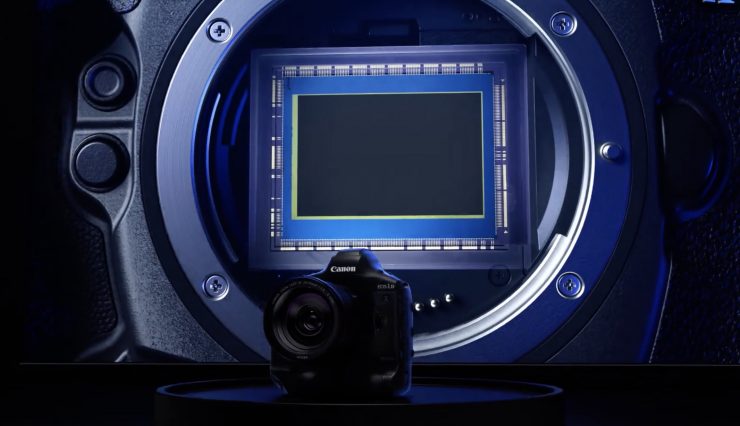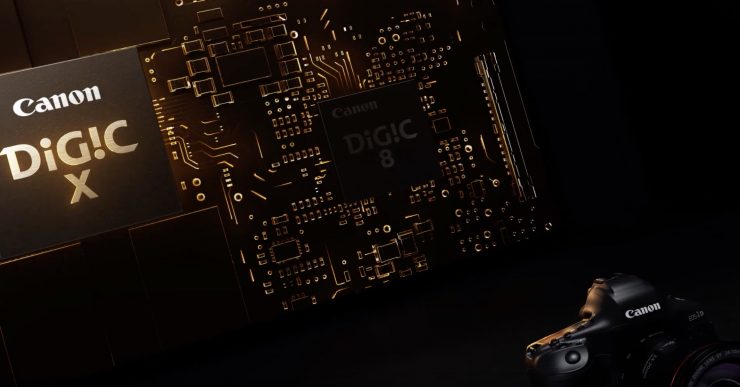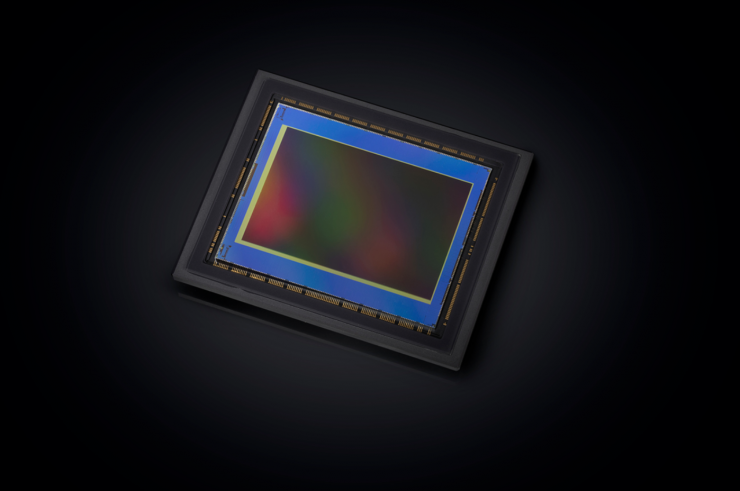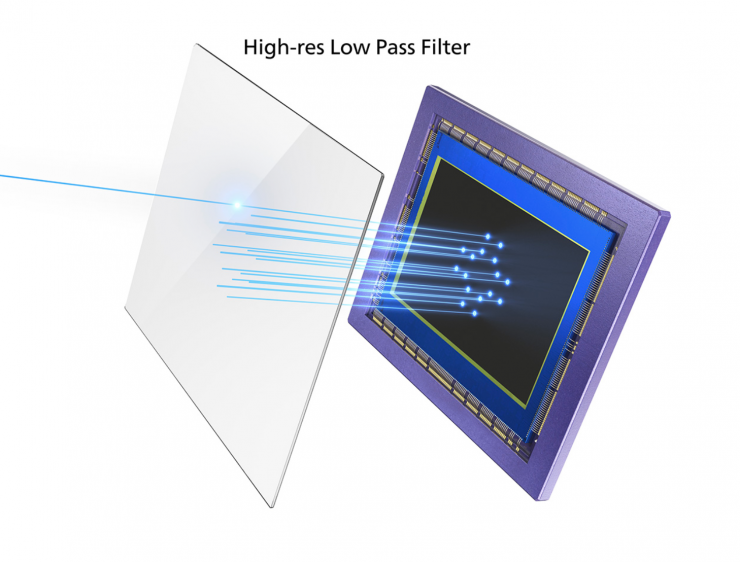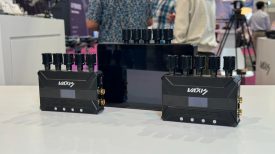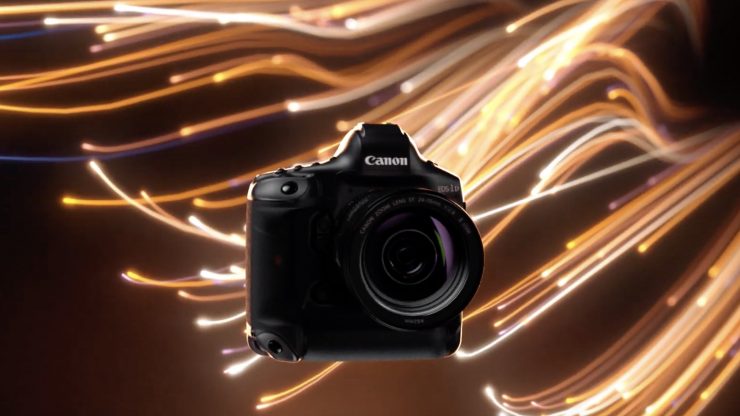
Canon has officially announced the EOS-1D X Mark III at CES 2020 in Las Vegas. It can shoot 5.5K RAW internally at up to 60fps, as well as full-frame 4K DCI in10-bit 4:2:2 at up to 60fps.
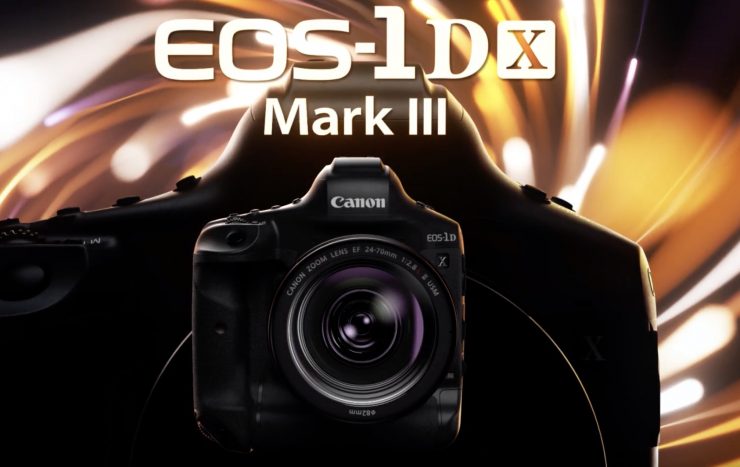
The Canon EOS-1D X Mark III was designed primarily for sports and wildlife photographers, but it looks to be a fairly decent hybrid if you want to capture video and stills. The camera features a newly designed 20.1MP full-frame CMOS sensor and updated DIGIC X image processor.
Key features
- 20.1MP Full-Frame Sensor
- DIGIC X Image Processor
- Up to 20 fps continuous shooting in live view or 16 fps with the viewfinder
- EOS iTR AF X Autofocus & Dual Pixel CMOS AF
- DCI 4K and 5.5K Raw Video
- Dual CFexpress card slots
- Built-in Wi-Fi, Bluetooth, and GPS
The camera is capable of continuous shooting rates up to 16 fps with the optical viewfinder or 20 fps in live view, with a 1000-shot buffer when shooting raw+JPEG. Complementing this speed is an impressive native sensitivity range from ISO 100-102400, that can be expanded to ISO 50-819200, to suit working in a variety of lighting conditions. Also benefitting the speed is the EOS iTR AF X autofocus system, which uses 191 points for quickly and accurately acquiring focus. It also enables Face Tracking and Head Detection AF functions, which use Deep Learning Technology, to maintain critical focus on moving subjects. Additionally, when working in live view, Dual Pixel CMOS AF uses 3869 manually selectable points and provides a smooth, natural focusing quality akin to the way a camcorder acquires focus.
Video Specs
The 1D X Mark III has the ability to record DCI 4K internally at up to 60 fps in 10-bit 4:2:2, as well as Full HD at 120 fps. The stand out video feature is that the camera can internally record 5.5K (5472 x 2886) RAW at up to 60 fps. When recording in 5.5K Raw, the footage is captured in 5472×2886 12-bit, CRM files.
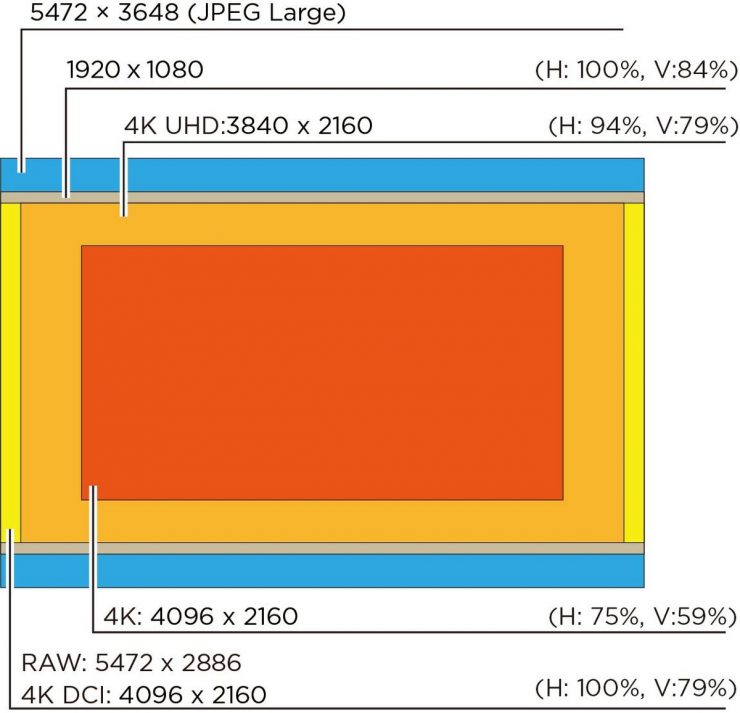
The 4K DCI digital video format is derived from the original 5.5K readout using Canon’s Oversampling 4K Processing. In turn, the 4K UHD format is simply cropped slightly to the 16:9 aspect ratio from the 17:9 aspect ratio 4K DCI format.
The reason the camera can record 5.5K RAW at up to 60p is in part due to Canon choosing to go with Dual CFexpress memory card slots.
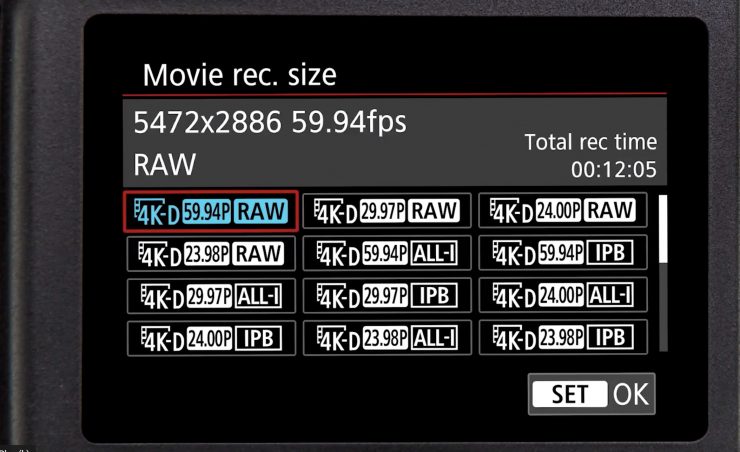
DCI 4K recording is possible using both the full sensor area or in a cropped mode. 5.5K RAW uses the full width of the sensor.
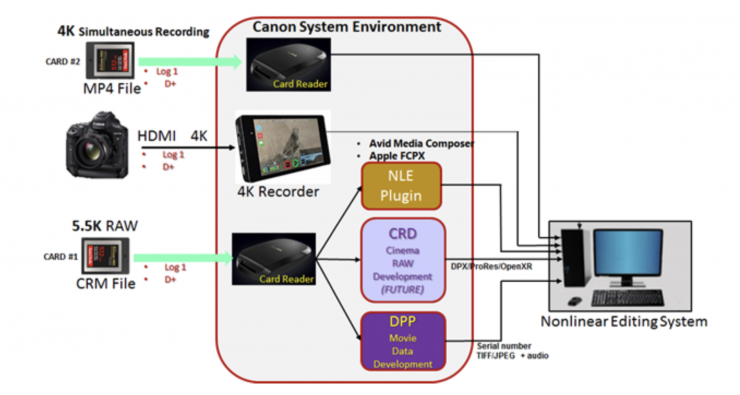
To process the RAW movie files you have to use Canon’s Digital Photo Professional 4 Software. Here, you can make adjustments and then export your clips as image sequences. It looks as if there will be NLE Plugins and some sort of dedicated Canon Cinema RAW software as well.
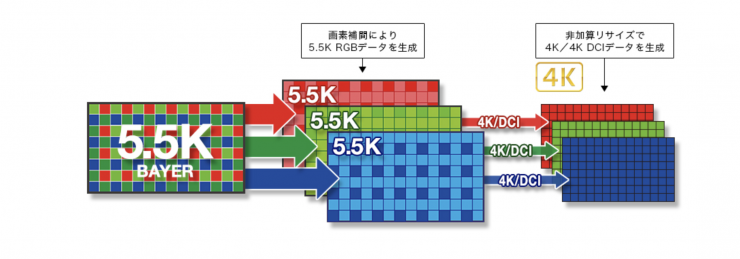
A high-quality debayer algorithm (Oversampling processing is only performed for 4K DCI / UHD crop) that has been used in the CINEMA EOS SYSTEM has been adopted. 5.5K data is acquired for each RGB. 4K video is generated by non-additive resizing. According to Canon, excellent color reproducibility and clear details. Moire, jaggy, and noise are also reduced.
The 1D X Mark III can utilize lenses with IS when shooting video and there is manual focus peaking, a focus guide (the same that is used on the C200, C500 Mark II, etc.), and Canon Log.
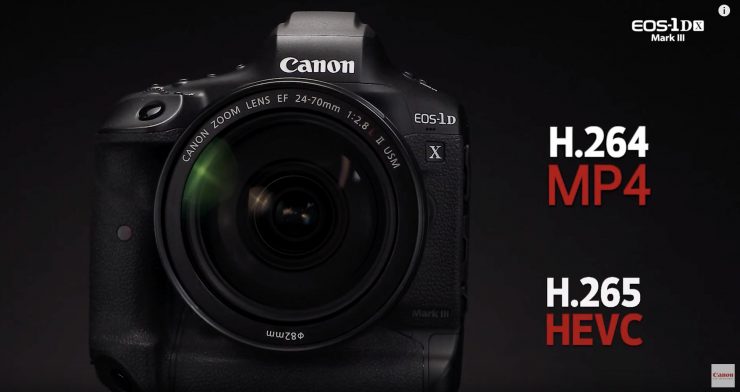
The camera can be set to record in H.264 8-bit 4:2:0 or in 10-bit H.265 10-bit 4:2:2 when using Canon Log. In Canon Log the lower limit of the automatic setting range of ISO sensitivity is ISO400. Other picture profiles that are available: Auto, Standard, Portrait, Landscape, Fine Detail, Neutral, Faithful, Monochrome, User Defined 1–3.
When shooting at higher frame rates such as 100/120fps the maximum shooting time is 7 minutes and 29 seconds. This can only be done in 8 bit. The compression is MPEG-4 H.264 / AVC and the recording format is MP4 only.
If you want to see some vision captured with the 1D X Mark III, you can above.
Above you can see some thoughts from Matthew Vandeputte, from a hands-on event in Sydney, Australia.
The caveat to shooting RAW video is that there is no autofocus available at 50/60fps and the IS doesn’t work at any frame rate. The focus guide system also doesn’t work when shooting RAW.
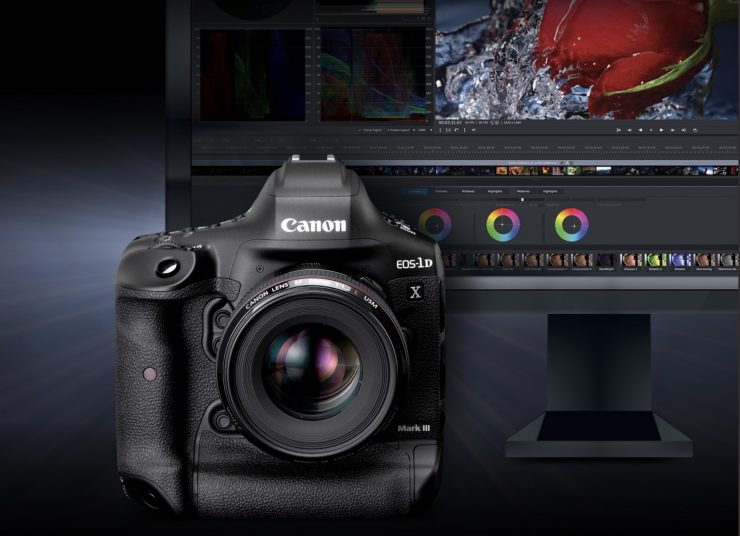
Autofocus also doesn’t work when shooting in full frame UHD or 4K DCI at 50/60fps. You can shoot 4K DCI in cropped sensor mode at 50/60fps and the autofocus will work.
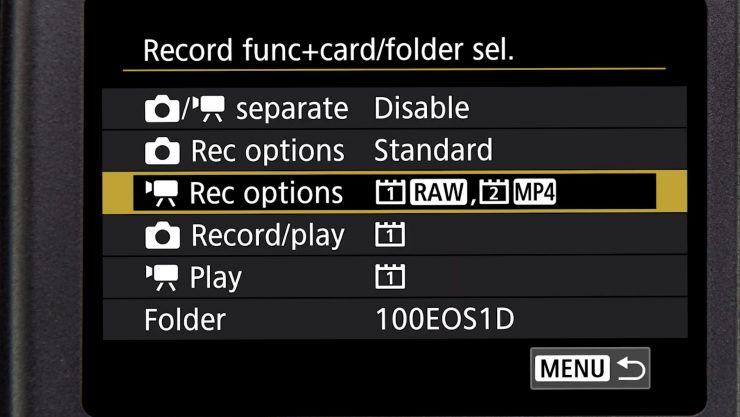
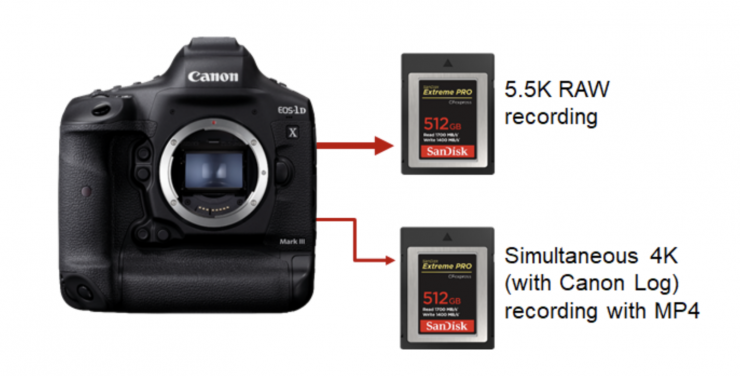
For easier workflows, the camera can also record 4K proxy files in MP4 at the same time as recording RAW internally. It would have been nice to see a Canon RAW Light option. The trouble with shooting 5.5K RAW at 23.98p is that you will fill up a 256GB card in just 18 minutes! The data rate is a whopping 1800 Mbps. 5.5K RAW at 60p is 2600 Mbps.
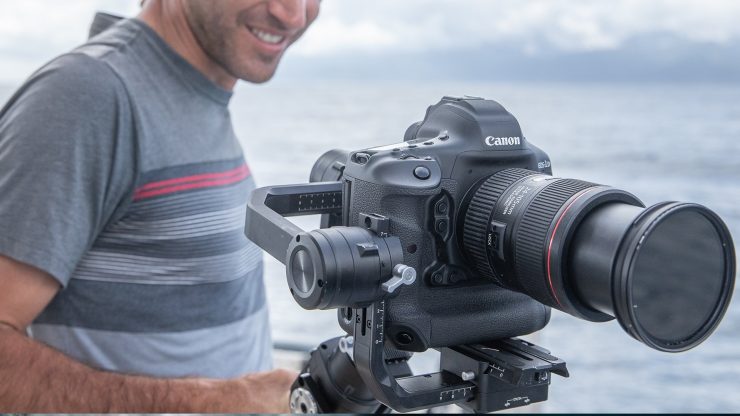
As far as what goes out over HDMI, the camera can output 10-bit movie footage in ITU-R BT.2020 color when Canon Log setting is activated.

It can shoot in the following resolutions and frame rates:
- 5.5K RAW video (5496×2904) – (23.98, 24, 25, 29.97, 50, 59.94 fps)
- 4K DCI — uncropped — (17:9 4096×2160) – (23.98, 24, 25, 29.97, 50, 59.94 fps) YCbCr 4:2:2 @ 10-bit using the data-efficient MPEG-4 / H.265 HEVC codec
- 4K DCI — uncropped — (17:9) 4096×2160 – (23.98, 24, 25, 29.97, 50, 59.94 fps) YCbCr 4:2:0 @ 8-bit using the well-established MPEG-4 / H.264 AVC codec
- 4K DCI — cropped — (17:9) – 4096×2160 (23.98, 24, 25, 29.97, 50, 59.94 fps) YCbCr 4:2:2 @ 10-bit using the data efficient MPEG-4 / H.265 HEVC codec
- 4K DCI — cropped — (17:9) – 4096×2160 (23.98, 24, 25, 29.97, 50, 59.94 fps) YCbCr 4:2:0 @ 8-bit using the well-established MPEG-4 / H.264 AVC codec
- 4K UHD — uncropped — (16:9) – 3840×2160 (23.98, 25, 29.97, 50, 59.94 fps) YCbCr 4:2:2 @ 10-bit using the data efficient MPEG-4 / H.265 HEVC codec
- 4K UHD — uncropped — (16:9) – 3840×2160 (23.98, 25, 29.97, 50, 59.94 fps) YCbCr 4:2:0 @ 8-bit using the well-established MPEG-4/ H.264 AVC codec
- Full HD (16:9) 1920×1080 – (23.98, 24, 25, 29.97, 50, 59.94 fps) YCbCr 4:2:2 @ 10-bit using the MPEG-4 / H.265 HEVC codec Full HD YCbCr
- Full HD 16:9) 1920×1080 – (23.98, 24, 25, 29.97, 50, 59.94 fps) 4:2:0 @ 8-bit using the MPEG-4 / H.264 AVC codec
In Full HD, 24p recording will be supported through a firmware update after shipping.
There always has to be something that doesn’t make sense. In Canon’s specifications, it says that Movie recording is interrupted if the maximum recording time per movie, 29 min. 59 sec., is exceeded.
If that wasn’t bad enough, you can’t do focus magnification when the camera is recording.
As far as bitrates are concerned, they are:
- 5.5K RAW: (50/59.94p) Approx. 2600 Mbps (30/25/24/23.98p) Approx. 1800 Mbps
- Canon Log off (H264 MP4)
- 4K DCI (50/59.94p): ALL-I Approx. 940 Mbps, IPB Approx. 230 Mbps
- 4K DCI (29.97p/25.00p/24.00p/23.98p): ALL-I Approx. 470 Mbps, IPB Approx. 120 Mbps
- 4K DCI cropped (50/59.94p): ALL-I Approx. 940 Mbps, IPB Approx. 230 Mbps
- 4K DCI cropped (29.97p/25p/24.00p/23.98p): ALL-I Approx. 470 Mbps, IPB Approx. 120 Mbps
- 4K UHD (50/59.94p): ALL-I Approx. 940 Mbps, IPB Approx. 230 Mbps
- 4K UHD (29.97p/25p): ALL-I Approx. 470 Mbps, IPB Approx. 120 Mbps
- Full HD (119.90p/100p): ALL-I: Approx. 360 Mbps
- Full HD (59.94p/50.00p): ALL-I: Approx. 180 Mbps
- Full HD (59.94p/50.00p): IPB Approx. 60 Mbps
- Full HD (29.97p/25p): ALL-I: Approx. 90 Mbps
- Full HD (29.97p/25p): IPB: Approx. 30 Mbps
- Full HD (29.97p/25p): IPB light: Approx. 12 Mbps
- Canon Log on (H265 MP4)
- 4K DCI (50/59.94p): ALL-I Approx. 1000 Mbps, IPB Approx. 340 Mbps
- 4K DCI (29.97p/25.00p/24.00p/23.98p): ALL-I Approx. 470 Mbps, IPB Approx. 170 Mbps
- 4K DCI cropped (50/59.94p): ALL-I Approx. 1000 Mbps, IPB Approx. 340 Mbps
- 4K DCI cropped (29.97p/25p/24.00p/23.98p): ALL-I Approx. 470 Mbps, IPB Approx. 170 Mbps
- 4K UHD (50/59.94p): ALL-I Approx. 1000 Mbps, IPB Approx. 340 Mbps
- 4K UHD (29.97p/25p): ALL-I Approx. 470 Mbps, IPB Approx. 170 Mbps
- Full HD (119.90p/100p): ALL-I: Approx. 470 Mbps
- Full HD (59.94p/50.00p): ALL-I: Approx. 170 Mbps
- Full HD (59.94p/50.00p): IPB Approx. 90 Mbps
- Full HD (29.97p/25p): ALL-I: Approx. 135 Mbps
- Full HD (29.97p/25p): IPB: Approx. 45 Mbps
- Full HD (29.97p/25p): IPB light: Approx. 18 Mbps
Body & Design
The D X Mark III has to be able to survive in the harshest of conditions and that is why it features a durable and robust body design. This camera uses a magnesium alloy construction that is weather-sealed to guard against dust and moisture for working in especially trying environments.
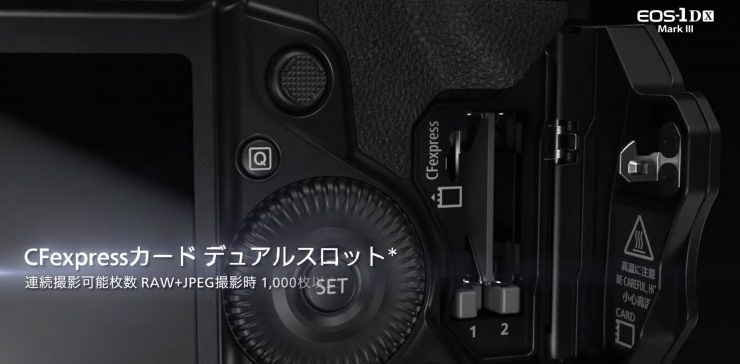
The body also incorporates dual CFexpress memory card slots to support the fast-continuous shooting rates and high-resolution video capabilities.
The camera weighs:
- Approx. 44.09 oz. / 1250g (Body only)
- Approx. 50.80 oz. / 1440g ( Including battery, and memory card)
The optical pentaprism viewfinder is benefitted by an updated mirror drive mechanism for reduced blackout and the 3.2″ 2.1m-dot touchscreen LCD is available for intuitive playback and menu navigation. Additionally, built-in Wi-Fi, Bluetooth, and GPS permit seamless wireless connectivity and a built-in Ethernet port allows for faster wired LAN file transferring.
20.1MP Full-Frame Sensor and DIGIC X Image Processor
The camera uses a redesigned 20.1MP full-frame CMOS sensor and DIGIC X image processor. The sensor itself is paired with a newly designed low pass filter, which is claimed to help eliminate moiré and other aliasing.
The sensor and processor work together to enable up to 20 fps continuous shooting in live view or 16 fps with the viewfinder, and the buffer allows raw+JPEG bursts of up to 1000 frame sequences.
There is a native sensitivity range of ISO 100-102400, which can be expanded to ISO 50-819200 to support working in a wide variety of lighting conditions.
Electronic In-Body Stabilization
Canon’s EOS-1D X Mark III’s uses Electronic In-Body Stabilization, or EIBS, for capturing smoother, more stable cinematic footage in conjunction with the powerful new DIGIC X image processor

Now, if you plan on using IS there are some limitations when shooting video. It doesn’t work at all when shooting RAW and it does crop your image depending on what mode you are shooting in.
Autofocus
The camera also receives a new autofocus system. The EOS iTR AF X uses 191 points to quickly and accurately acquire focus on subjects. Of the 191 points, 155 are cross-type points that excel in various lighting conditions and provide increased accuracy on a variety of subject types. This AF system also utilizes Deep Learning Technology to enable refined tracking capabilities, such as Head and Face Detection.
When recording video or shooting in live view, a Dual Pixel CMOS AF system is employed that features 3869 manually selectable autofocus points, with 525 automatic positions. This focusing system is said to offer smooth and fast focusing performance in a similar manner to how a camcorder acquires focus. Dual Pixel CMOS AF integrates two separate photodiodes within each pixel to provide a broad and dense network of phase-detection gathering elements across a majority of the image sensor to reduce focus hunting for faster, more direct control of focus placement.
When working with still imagery, this focusing system works to acquire focus quickly and accurately, making it ideally suited to shooting and tracking moving subjects so that critical focus is attained with each shot.
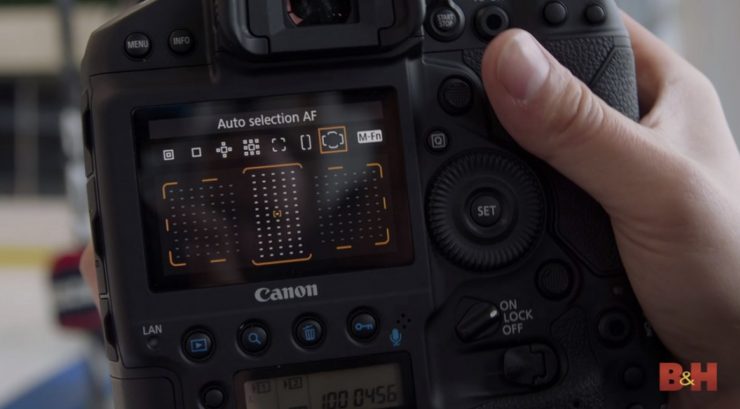
When shooting video, a Movie Servo AF mode offers smooth and natural focusing when changing from different subjects or different distances within the scene, as well as the ability to specify tracking sensitivity, AF speed, and Face Tracking priority. Benefited by the Touch AF system, rack focus is possible simply by touching elements within the scene on the touchscreen in order to change focus in an intuitive manner. Subject tracking in movies is also heightened due to the Dual Pixel CMOS AF system’s ability to recognize subjects and maintain focus when working within changing or cluttered scenery.
Battery & Other Features
A LP-E19 rechargeable lithium-ion battery offers improved performance compared to previous generation 1D cameras.
Built-in Wi-Fi, Bluetooth, and GPS offer flexible wireless control and geotagging capabilities, along with the ability to apply IPTC tags to files.
For physical, wired connectivity, there are integrated USB Type-C, mini HDMI, headphone, microphone, N3 remote, and Ethernet ports. Compatible with optional WFT-E9A Wireless File Transmitter for faster file transferring over wireless LANs.
Thoughts
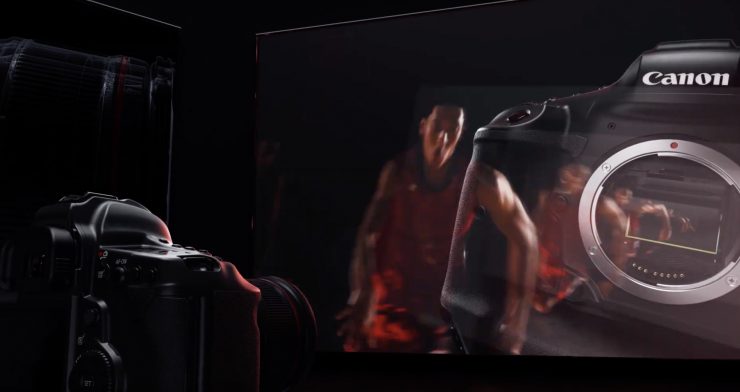
Canon has certainly lifted their game, and the 1D X Mark III is certainly a very impressive camera. For video shooters there is a lot to like, but I think a lot of Canon fans would have liked to have seen these sort features in a mirrorless and not a DSLR
Despite the impressive video features, there are a few caveats that you need to be aware of. The lack of autofocus when shooting full frame 50/60fps and having no IS when shooting RAW, coupled with the massive data rates of shooting 5.5K RAW may put some potential owners off.
The other limiting factor for video shooters is that you are stuck with EF mount. This makes lens options a little more limiting.
You also have to factor in the high cost of the camera. At $6,499 USD it is almost $2,500 USD more than a Panasonic S1H.
Overall, and I’m not prepared to make much of a judgment call given I haven’t even seen the camera, this looks like an aggressive offering from Canon. This is the first time in a very long time that they haven’t crippled a DSLR or mirrorless camera. The 1D X Mark III would make a very compelling option as a B camera to the new C500 Mark II. In saying that, at $6,499 USD that makes it the exact same price as a C200.
If you are primarily shooting video, then trying to justify spending $6,499 USD on a DSLR could be a hard pill to swallow.
Full Specifications
Price & Availability
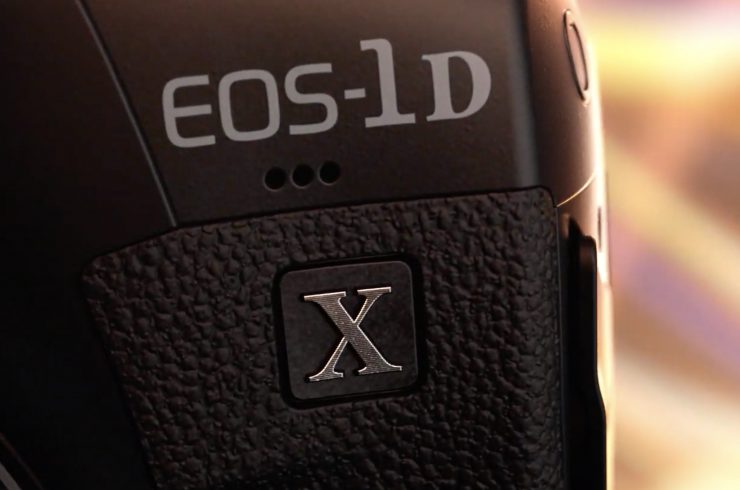
The camera is now available to pre-order for $6,499 USD. It will be available in mid-February.

